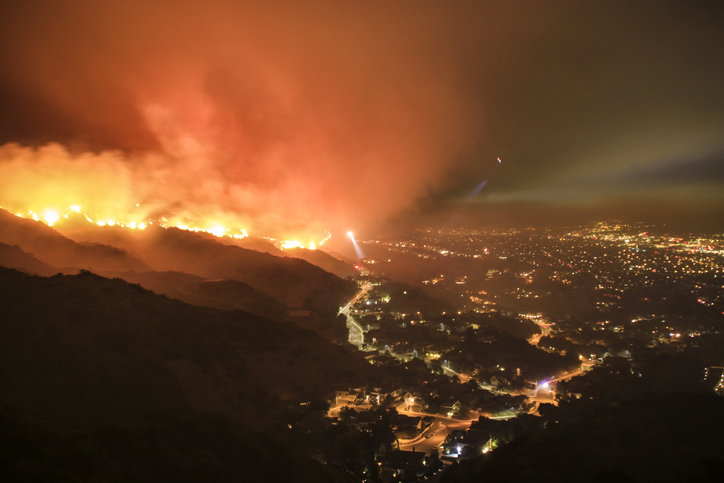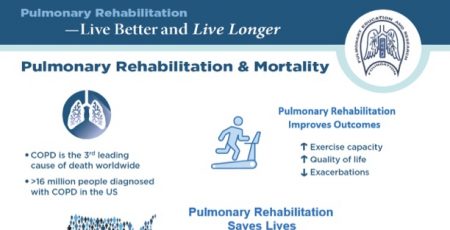
29 Jul Health Impacts of Wildfires
Wildfires in nearby counties can impact your lung health
by Robert Chang, MD
Wildfire season is upon us! And with drought conditions and more intense heatwaves, wildfires may become a destructive, year-round phenomenon. It is well known that wildfires produce ozone (smog), noxious gases, and tiny particulate matter that are easily dispersed into the atmosphere. Very small particulate matter, called PM2.5, consists of the tiniest pieces of particulate solids and liquids that are <2.5 microns in diameter; that’s about 100 times smaller than the diameter of a human hair. Larger particles are heavier and eventually fall to the ground, however, the invisible PM2.5 particles can remain suspended in the air PM 2.5 and travel hundreds of miles from the origin of a wildfire. Prevailing winds and environmental conditions, therefore, spread the effects of a wildfire far wider than the obvious destruction observed on the ground.
Short-term exposure to particulate matter pollution can lead to acute symptoms of rhinitis (runny nose, chronic sneezing), bronchitis (inflammation of the airways) as well as more concerning symptoms such as shortness of breath, wheezing, chest pain, and even heart attack. Multiple studies show that hospitalizations and premature death increase during times of heavy air pollution with either ozone or PM2.5.
Individuals who are considered particularly “sensitive” to pollutants are those with asthma, COPD, other lung diseases, and those who have cardiovascular disease. Children, whose lungs continue to develop into their teenage years, and those aged over 65, are also considered to be sensitive. These groups are more susceptible to the effects of moderate levels of air pollution.
What follows are some practical tips to prevent and mitigate some of the adverse health impacts of wildfire air pollution:
1) When there are nearby wildfires, monitor air quality frequently using the Air Quality Index (AQI) measured in your local area.
Visit www.AirNow.gov for a nationwide map of air quality or, if you are in Southern California, use an app such as the South Coast AQMD to find the daily level of the Air Quality Index (AQI), the main pollutant for the day, and the forecast for your zip code area. AQI provides an index of the current air quality, and guidance exists for what to do if the AQI is raised (e.g. if the air quality is reduced). Using a smartphone app, one can easily access up-to-the-minute AQI measurements. With AQI numbers above 101, outdoor exercise should be curtailed, especially for sensitive individuals. For higher AQI, above 150, more activity restrictions such as sheltering indoors are recommended (see resources below).
2) Recognize that outdoor pollution can penetrate our homes and may contribute to harmful indoor air pollution.
The very small pollution particles measured by the PM2.5 index may be present even when more visible soot and dust are not apparent. It is estimated that our homes have typically 50% of the air pollutants found outdoors. Since we spend most of our time indoors, adverse healthcare impacts from wildfires may, in fact, come largely from our exposure to invisible particles found indoors. Mitigation of adverse effects of wildfires, therefore, requires cleaning the air indoors.
If you, or one of your family, falls within the groups considered “sensitive” to air pollution, it may be wise to check air filtration systems in your home prior to wildfires taking place. If there is central air conditioning available, check with your service provider to ensure you are using the most efficient type of air filter supported by your air conditioning system. If there is no central air system, the American Lung Association (among others) suggests that you consider the creation of a “clean room” to be used when you are sheltering in place from wildfires. You can prepare a clean room for your home by using a portable, HEPA-filter-based air cleaner (one that does not create ozone). The right size of the portable cleaner should be determined by the square footage of the room; the portable air purifier should be able to exchange the air volume in the clean room at least several times an hour. During periods of very unhealthy air, this designated central room or bedroom should have windows and doors closed. Be sure to seal the edges that have airflow leaks from other rooms or outdoors by placing towels or tape on cracks. Keep the portable air cleaner running continuously during heavy air pollution.
Also, during periods of unhealthy air, try to avoid the creation of additional indoor pollution. Avoid tobacco smoking, burning candles or incense, frying or searing foods on cooktops, using a wood-burning fireplace or generators that create toxic gases such as carbon monoxide. Even the use of air fresheners and vacuuming the floor can increase indoor air pollution.
3) If you have asthma or COPD, have an action plan ready for medications to be used in case symptoms of wheezing, cough, or shortness of breath develop.
Be prepared to seek medical care if your symptoms do not abate or if you have chest pain or persistent trouble breathing. If you must go outdoors, the use of respiratory masks to prevent inhalation of PM2.5 particles requires wearing a tight-fitting N95-type mask (not a cloth or surgical mask). However, these masks may make breathing difficult for people who have severe chronic lung diseases. In which case, consult your doctor regarding your personal needs for medications, your action plan, whether to adjust chronic oxygen use, and the proper selection of mask respirators.
4) Evacuation Plans
When air quality is unhealthy with nearby wildfires, it is important to stay indoors, remain resting, and avoid heavy or prolonged exercise. Vigorous breathing during exercise will lead to more inhalation of air pollutants. You should be ready to leave if directed by disaster management to evacuate with wildfires threatening your home. Preparation should include a supply of food and medications, respiratory masks, and an evacuation emergency kit. Have a planned escape route in mind and a family contact plan. For further details about what to bring with an emergency evacuation, review the Ready, Set, Go wildfire preparation brochure from LA County.
Wildfires are often accompanied by a power outage. In this case, you should be prepared to seek an evacuation center for clean and cooler air. For example, in the LA County area, there are community cooling centers available with central air conditioning (also see the LA County Public Health website). If you do go to an evacuation center, notify officials if you have heart or lung disease, and remember that currently, COVID-19 precautions will be in place.
5) Further education resources
If you wish to learn more, visit the websites listed below. These are especially helpful for those who live in what fire departments describe as wildland-urban interfaces, where home and commercial buildings have been built in areas that were once forested or remain with large areas of dry vegetation.
RESOURCES
Air Quality Index is 101-150. Unhealthy for sensitive groups.
People with heart or lung disease, older adults, and children should reduce prolonged or heavy exertion.
Air Quality Index is 151-200. Unhealthy.
Everyone, especially those in the sensitive groups, should reduce prolonged or heavy exertion.
Air Quality Index is 201-300. Very Unhealthy.
Everyone should avoid prolonged or heavy exertion. People in sensitive groups should avoid all physical activity outdoors.
Centers for Disease Control and Prevention: Chronic Conditions and Wildfire Smoke
American Lung Association: Wildfires
Robert Chang would like to thank Professor Edward Avol, Chief, Environmental Health Division, Department of Preventive Medicine, Keck School of Medicine, University of Southern California, for advice in the production of this article.





No Comments